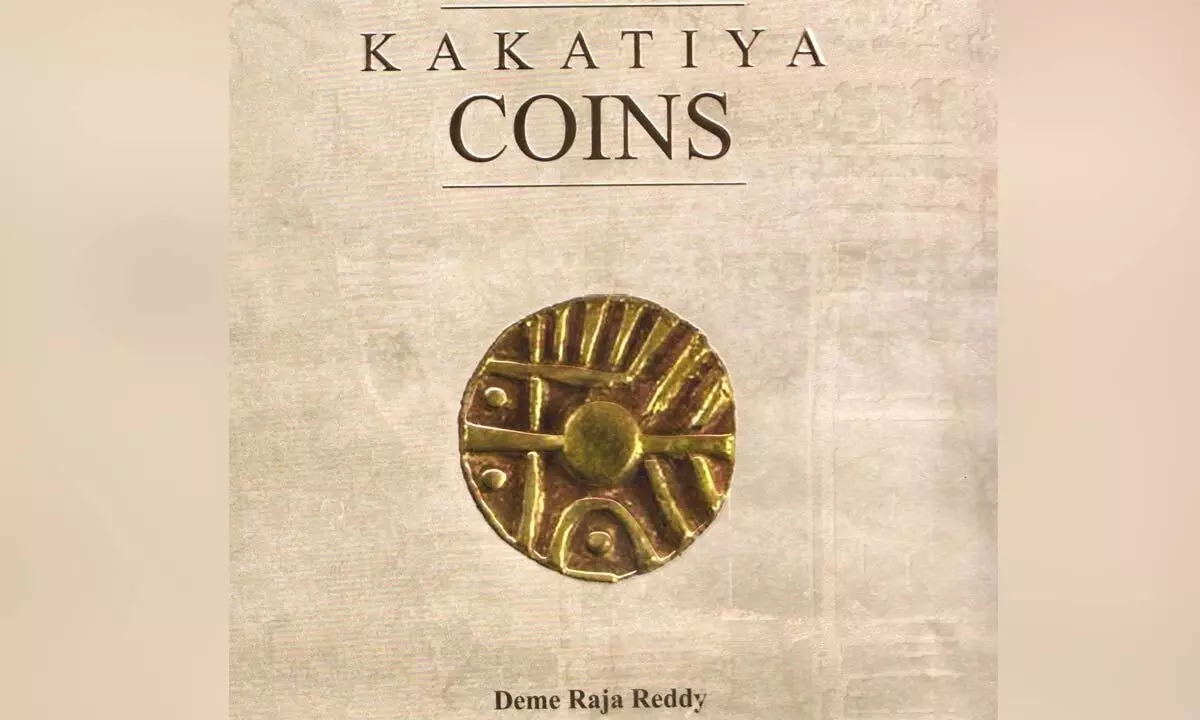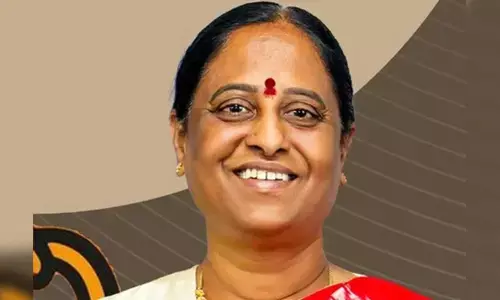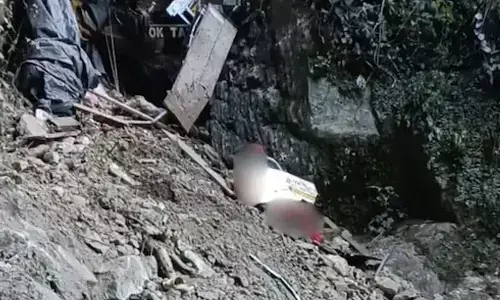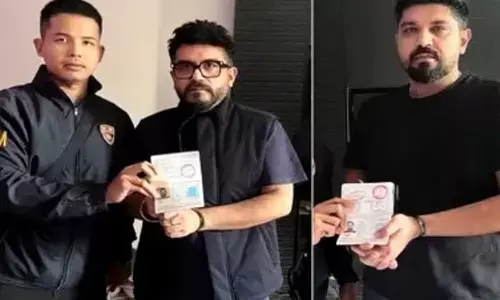Gold coins and more of the golden era of Kakatiyas

Gold coins and more of the golden era of Kakatiyas
But the Kakatiya Coins looks as valuable as it appears at face value
But the Kakatiya Coins looks as valuable as it appears at face value. This beautiful book is an authoritative and authentic source for the study of Kakatiya Coins , a great kingdom of South India. It not only describes the coins but also studies them critically in all their aspects. The points, which are dealt with here, are on numismatic studies in South India specifically in Kakatiya rule. In describing the features of a particular class of coins from the standpoint of standard, style and fabric or in discussing the significance of the numismatic terms, the author has utilised the literary data, which have a bearing on them.
As a famous historian once commented that one of the principal joys of local history was its inter-disciplinary nature. One could see how a multitude of disciplines could make their contribution to how local history is studied and formed. This book by Deme Raja Reddy confirms that how numismatics is a significant part of the study of the history.
In his forward Sri B P Acharya , IAS (Retd) ,Trustee of Kakatiya Heritage Trust stating about the author Dr Deme Raja Redy , said that though a physician by profession , he has pursued his personal passion to painstakingly compile a detailed catalogue of the coins found at different places , while comparing with the coins issued by other ruling dynasties of the period. This provides an interesting insight into the political economy of the Kakatiya period, and trade and commerce of that time. He observed that Dr Raja Reddy 's book provides a comprehensive analysis of coins issued by the Kaktiya rulers and their officials, and thereby fills a critical gap in the historiography of Kakatiya heritage.
Kakatiya was one of the three major dynasties to rule Telangana and it was the last major Hindu kingdom to rule this region. Kakatiyas were considered to be the most benevolent kings ever to rule Telangana. Most of Telangana is still dependent on the irrigation system that they developed. The identification of Kakatiya coinage took a long time. They were overlooked because the coins did not have a legend indicating the name of the ruler or reveal the name of their dynast.
As it is stated in its introduction , the book deals with the coinage of Kakatiyas and the study of coins of the medieval period of Deccan, and South India in general, was made difficult because the majority of rulers of that period did not put their names of the coins and neither did they mention the name of their dynasty. The study of myriad of coins shows the sophistication of the then government and of the economy and they carried a moral and religious message too.
Presenting a chronology of Kakatiya rulers in the second chapter of the book the author writes "It is evident that the Kakatiya Kings started as subordinates of the Rashtrakuta Kings and later, of the Western Chalukyan rulers of Kalyani. Their beginnings are dated around 956 A.D. and the dynasty blossomed over the next two hundred years before ending in 1323 A.D."
Over viewing a survey of the previously published literature on Kakatiya Coins in the third chapter, the author informs that the first ever reference about Kakatiya coins is found in the Journal of the Bombay Branch of the Royal Asiatic Society, Vol. II, p. 63 in which the Secretary described 10 Gold coins of which 6 were said to have carried the legend `Rudra'.
These gold coins weighed around 63 grains and no such coins were ever found subsequently. Next, the description of what came to be known as the Kakatiya coins was by Elliot (1886) in his book on coins of southern India. The exact references were given of the articles previously published describing the various types of gold coins of South India.
A hoard is a collection of coins left behind as savings, loot or treasure and these are usually buried in receptacles like copper or clay pots. The coins found in such hoards end up in archaeological museums. Important hoards of Kakatiya coins found in Telangana are listed comprehensively in a table given under the fourth chapter 'Hoards of Kakatiya coins in the State Museum'. It's very insightful to go through the table with exact numbers of gold, silver and copper coins, which were preserved in the State Museum, listed dynasty wise found in Nalgonda, Karimmnagar, Medak etc.
It is very thought provoking to read the description of Kakatiya Gold Coins With Unknown Legend as chaper Eight. The Padmakshi temple hoard of 1982 contained 567 gold coins, which included 272 coins of the boar type with the legend Ahitagajakesari. Since no inscription has been discovered so far identifying the Kakatiya ruler with this title, these coins have been listed as Kakatiya coins of the unknown type.
In another chapter of some interesting hoards have been explored. A majority of the Kakatiya hoards contain coins of similar type but there few interesting hoards, which contain the coins of the rulers of other dynasties alongside the Kakatiya coins. Such hoards are very interesting as they shed some light on the coins of the contemporary rulers of that era including coins of the kings who preceded them. A brief discussion of such hoards like Medak hoard, Khammam hoard , Padmakshi Gutta hoard is done.
Under the chapter 'Some Important Kakatiya Inscriptions Relevant to the Coins' the author elaborates that Inscriptions constitute one of the three main sources of information for compiling our ancient history, the over two being coins and literature of the period.
Further he gives example that the 300 inscriptions of Krishna deva raya's period are present in the temples of Tirumala and Tirupati, of which about 50 are issued by Krishna deva raya or by his queens. Other inscriptions were issued by officials of the Vijayanagar empire or by private individuals. Naturally, the official inscriptions are more useful for the reconstruction of ancient history. Sometimes Information about Telangana in inscriptions incised in other area for example Krishna deva raya's inscription in Tirupathi temple reveals his conquests of Telangana forts such as Nalgonda, Deverakonda, Undrakonda, Khammam etc., which are revealed in the inscription made during his fifth visit to the Lord Venkatesa in 1517 A.D.
In the chapter of Contemporary coins an interesting analysis of coinage pertaining to the dynasties of Western Ganga , Seuna (Yadava), Kalyani Chalukyan, Paramaras of Vidarbha , Jagadeva Parmar , Kesari of Odisha
This book is classified into eighteen chapters dealing separately with Hoards of Kakatiya coins in the State Museum , Methods of design Kakatiya coins, descriptions of gold coins, silver coins, unknown gold coins , official coins ,cotemporary coins . Last five chapters have been dedicated to discussion, Epilogue, References, Conversation table of Ratti into Grains and Grams, and acknowledgment. This book of 86 six pages has a form of beautiful catalogue with fascinating golden cover.
At every turn of the chapter ,literally, Deme Raja Reddy guides us into the wider context in which each coin reference has been positioned. That is why it is clearly a survey of South India 's local history as much as a cultural commentary.
The objective of the book is to bring expansive documentary in a nutshell. The book does indeed achieve this aim, through its articulate, well-grounded text but even more through its copious deployment in a fitting format of excellent colour photographs of coins particularly of gold coins with compressive description under every picture. The paper back and the pages are very attractive with a high quality gloss papers which maintain the resolutions of the photographs and clarity of images in the book.
Overall, The Kakatya Coins makes an interesting reading . The book will serve as a primer to any student of Indian history who is keen on exploring the glory of south India with reference to the coins of medieval period. It would not be an exaggeration to call it a complete guidebook cum Checklist for Numismatist with reference to the Kakatiya coins . This book is drafted to be a supporting guide to numismatist in identifying rare coins and its average market value of one of the greatest kingdoms of South India.



















